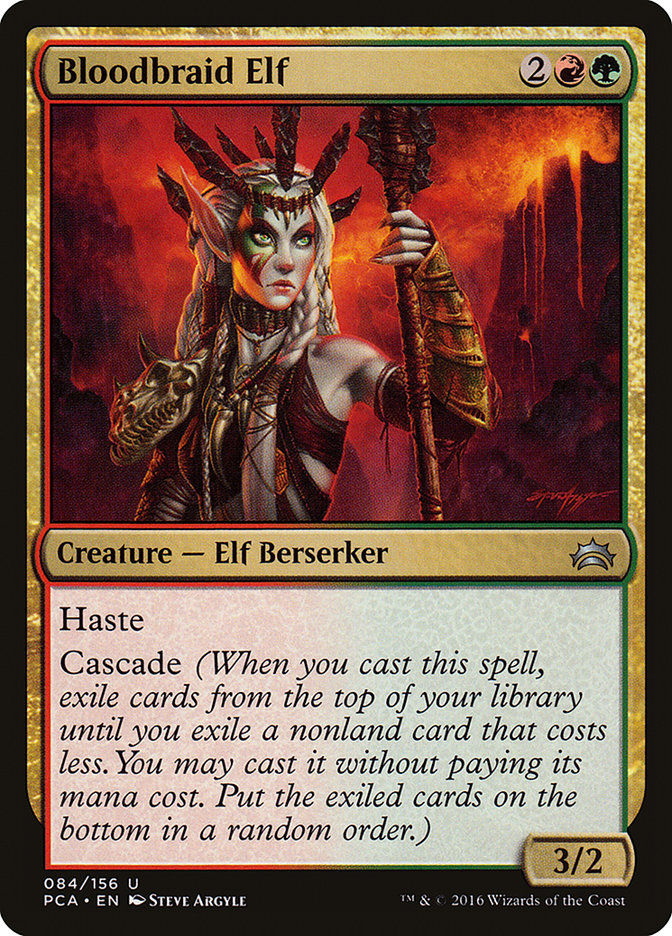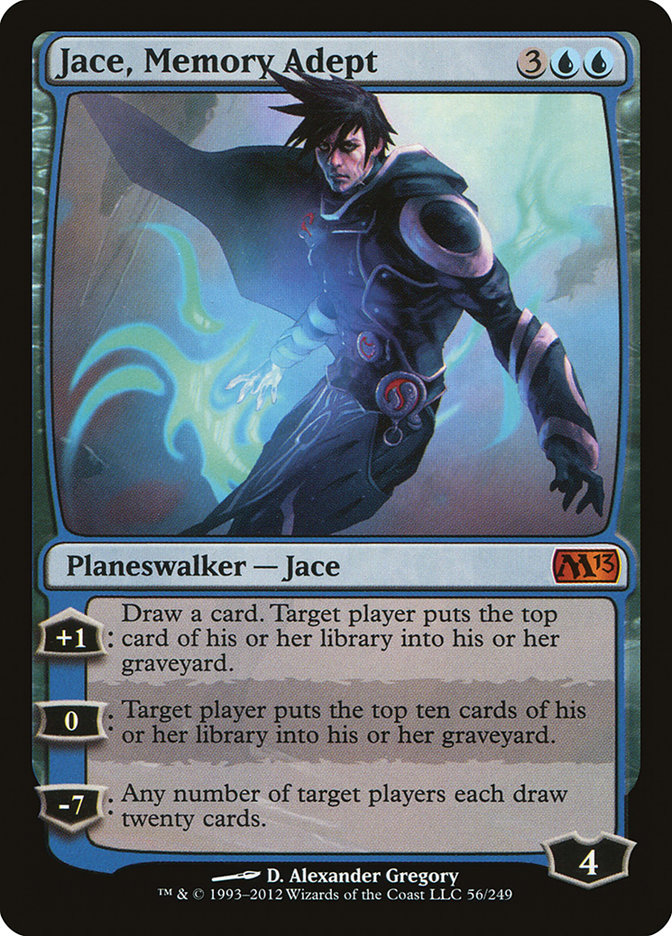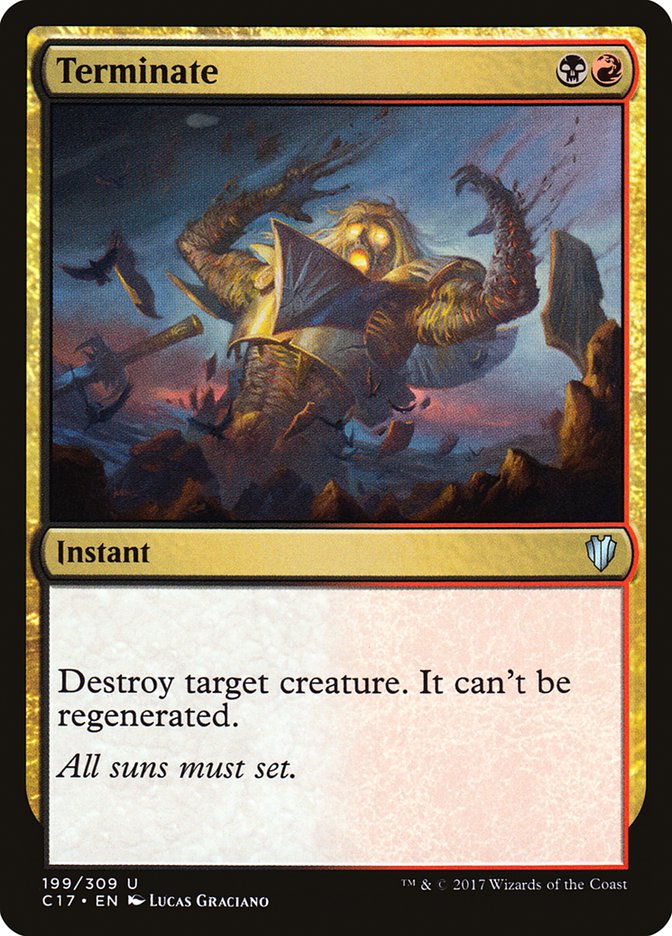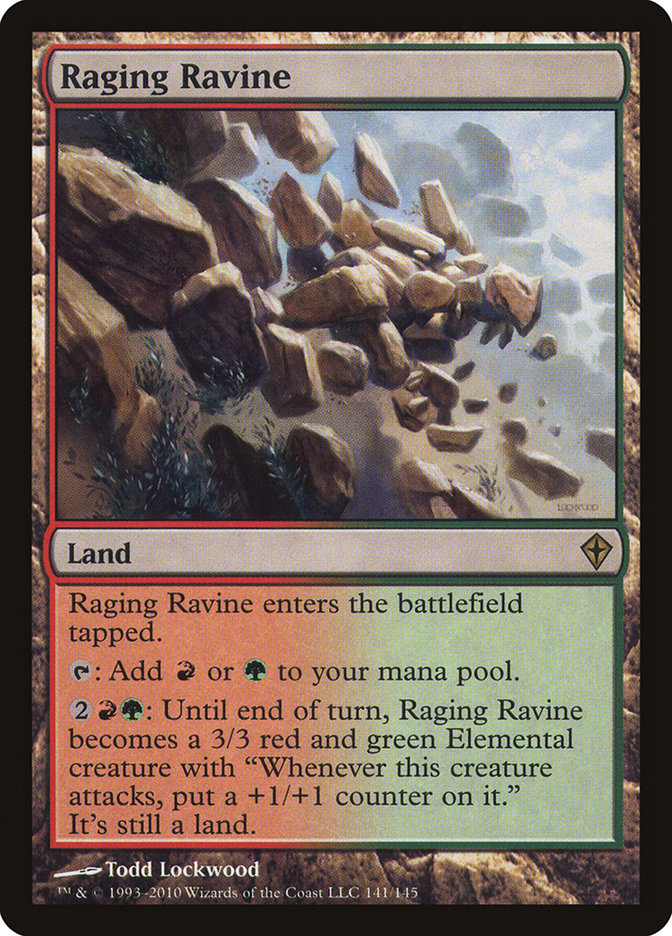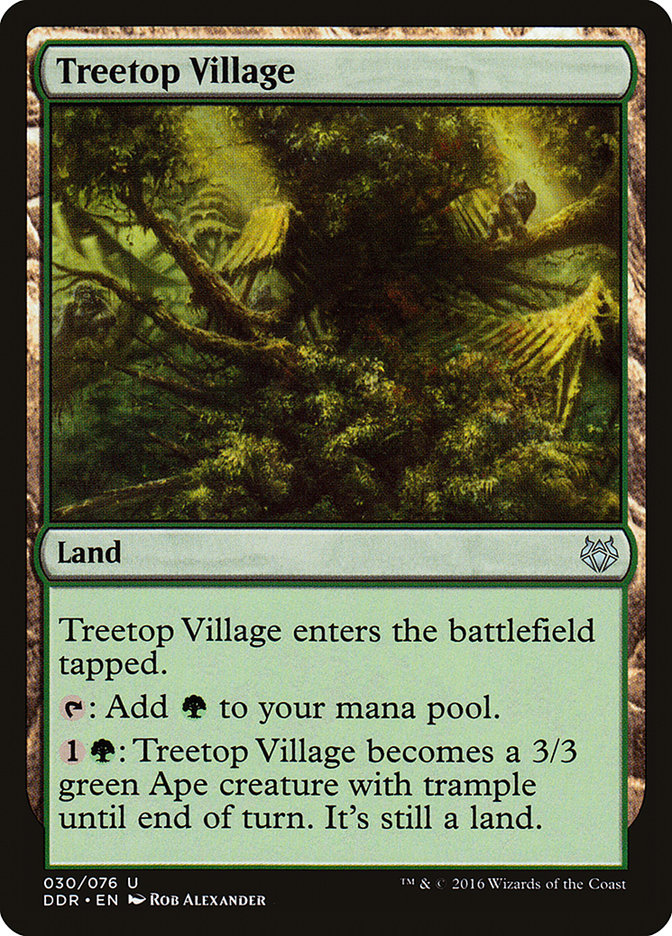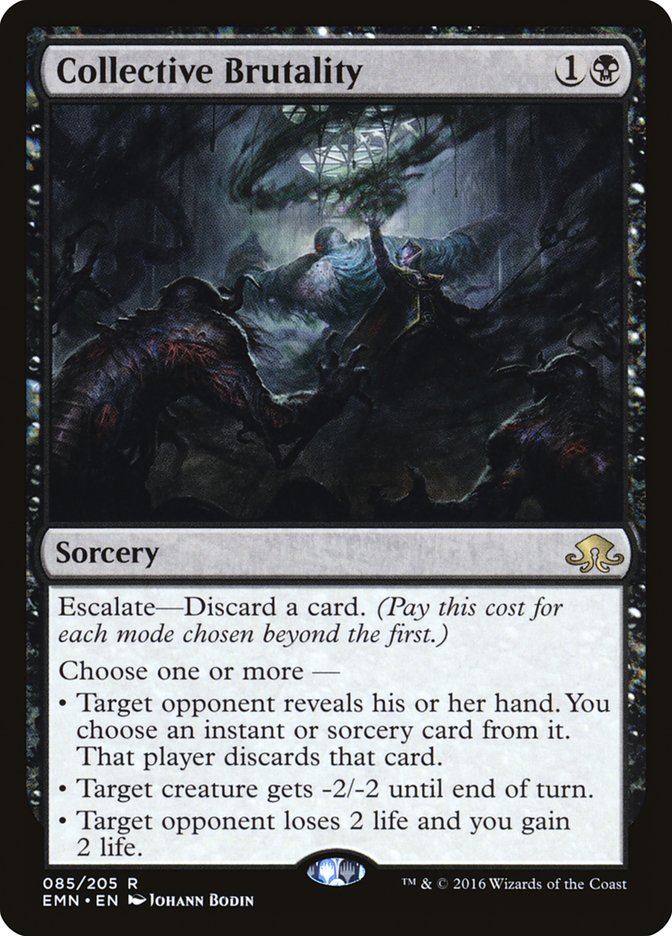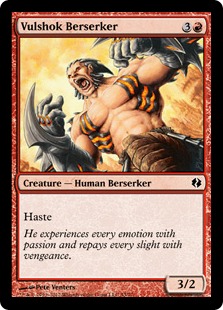Yesterday, Bloodbraid Elf was unbanned in Modern.
Yesterday was a good day.
Look, I’ve been playing Jund in Modern for a while. I’ve played Jund when
it was good, and I’ve played Jund when it was bad. It seems very unlikely
that the unbanning of Bloodbraid Elf will have an adverse effect on my
Modern win rate, so I’m excited. I told my friends after the last
tournament to stop talking to me if I registered Jund again, but they’ll
understand, right?
Bloodbraid Elf was banned in Modern back in 2013 for power level reasons.
It both made Jund too good, and made the non-Jund midrange decks look
silly. That’s not too surprising, considering Bloodbraid Elf’s pedigree.
Creatures (15)
Planeswalkers (3)
Lands (24)
Spells (18)
Sideboard

Those of you have been playing Magic for a while may recognize the above
deck as the terror of a Standard format long gone. That Philadelphia Open
was my first taste of Magic success, and I owed it all to Bloodbraid Elf.
The card was strong enough to let me top 8 a tournament when I had just
started Magic and had never played Constructed before, and it was strong
enough to run rampant over multiple formats in Magic’s history.
The thing about strong cards is that you can’t just throw them in a deck
and expect the best results. Well, okay, you can do that, and because the
cards are strong, you’ll get okay results. Maybe even good ones. But you
won’t get the best possible results, and that’s what we’re really after.
Cards at that power level are warping. Game-warping, format-warping, and
yes, deck-warping. All cards want you to do very specific things to get the
most out of them, but for most cards of normal power levels, it’s not worth
going out of your way to maximize them. Powerful cards pay you off in
spades for warping your strategy around them, but in order to do that
successfully you need to understand them.
When strong cards are printed, we often have to go through a lengthy trial
and error phase of figuring out how best to use them. Happily, with a card
that’s been out for a while but just coming off of a lengthy stay on the
ban list, there’s no need for such a phase. We can apply all of the card’s
secrets that we ferreted out years ago as long as we didn’t forget them in
the interim.
Luckily, my memory is pretty good.
Secret #1: Don’t play Bloodbraid Elf on an empty battlefield .
Cascade is a mechanic with more than a touch of variance to it. The first
month or two that we get to play with Bloodbraid Elf, you’re going to hear
a lot of players complaining that they keep cascading into Terminate when
their opponent doesn’t have any creatures. They’ll be upset that they are
so unlucky, when the truth is that they’re just not playing optimally.
Don’t let that be you.
The secret to not cascading into a removal spell when your opponent doesn’t
have a creature is to not cast a Bloodbraid Elf when your opponent doesn’t
have a creature. Simple, right?
Kind of. It’s certainly easy to not cast a specific card, but what are you
supposed to do instead? For guidance, let’s look at what Modern Jund lists
looked like in the Bloodbraid Elf era.
Creatures (16)
Planeswalkers (4)
Lands (25)
Spells (15)

Focus your attention on the lands. See those two Raging Ravine and those four copies of Treetop Village?
It’s such a clean line of reasoning. Creature-lands are phenomenal when our
opponent’s battlefield is empty, and that’s exactly when we’re looking for
things to do besides cast Bloodbraid Elf. Six creature-lands is a lot more
than you see current-era Jund-style decks run, and that’s no accident.
But that can’t be our only way of mitigating our cascade variance, can it?
Of course not! We also have the ability to simply let our opponent keep a
creature on the battlefield so that our future Bloodbraid Elves will be
better.
We do this by prioritizing threat deployment over removing opposing
threats. Ideally, we will let our opponent keep a single creature on the
battlefield and keep it in check with our own battlefield presence. You
already wanted to play your own Tarmogoyf before killing their Champion of
the Parish most of the time, now you have another reason to do so.
Because we also play a lot of discard spells and get the opportunity to
somewhat sculpt our opponent’s draw, we have even more control over this.
You can’t let yourself make these decisions in isolation. Before Bloodbraid
Elf, it often made sense to take the only threat out of your midrange
opponent’s hand. Now things have changed, and you should keep that in mind
when making such decisions.
Speaking of discard spells, that’s another avenue where the variance on
cascade can get us. If you cascade into a Thoughtseize when your opponent
has no cards in hand, you’re unhappy. But you can’t just not cast the Elf
in those spots, as your opponent is likely to stay hellbent for the rest of
the game. What can we do about this problem?
Well, we can try and slow the game down and strand cards in their hand.
Most often, this means not presenting them with an opportunity to use their
removal spells. In a Fatal Push mirror, for instance, by holding onto our
Tarmogoyf we can keep copies of Fatal Push in their hand to hit with
potential later cascaded discard spells. This can be a hard tactic to
employ, and should mostly be utilized in conjunction with information you
gained from early discard spells.
Secret#2: The fewer conditions on your cards, the better.
Ultimately, what all of the last secret is saying is that you want to make
sure the card you cascade into is going to be effective. Bloodbraid Elf is
great, but you definitely don’t want to paying four mana for a 3/2 haste
with no other effect. You need that second card for the Elf to be
worthwhile, and the payoff is worth putting some work into making sure it
will be good as often as possible.
We talked about ways to play the game to make sure the card you cascade
into does something. Now, let’s talk about ways to build your deck to do
the same.
Conditional cards are our enemy. They are the ones that might have no
profitable use case when cascaded into and awkwardly not get cast at all or
get cast for a very minimal effect. The fewer conditional cards we run, the
more likely we are to have good cascades.
Unfortunately, we need conditional cards. Interactive spells are
conditional by definition, as they need something to interact with. That’s
the problem with removal spells when they don’t have a creature, or hand
disruption when they don’t have a hand.
Ideally, we play interactive spells with good fail cases. The Lightning
Bolt versus Fatal Push battle is about to get very interesting. When they
don’t have a creature, Lightning Bolt still does three to the face. Fatal
Push can’t even push through one point of damage, let alone three.
This distinction is most relevant against non-creature decks. As discussed
previously, against a deck that does want to have a battlefield presence,
you can simply wait on your Bloodbraid Elf. Against something like Tron or
Scapeshift no amount of waiting is going to make your Fatal Push good.
Ultimately, I think Fatal Push is too good to be pushed out completely, but
I think you’re going to see the pendulum start to swing back towards
Lightning Bolt a bit.
I think everyone with an internet connection knows by this point that
Bloodbraid Elf and Kolaghan’s Command are a fantastic duo. However, I think
everyone is focused on the wrong synergy between them. Yes, it’s great that
Kolaghan’s Command can rebuy your Bloodbraid Elf. It’s better that it is a
powerful spell that you can cascade into that will never be dead at any
point in the game.
In terms of your cascade hits, Kolaghan’s Command is the safest include in
the world. What’s the worst that can happen, that they have no cards in
hand or artifacts on the battlefield while having never killed one of your
creatures? To be honest, that sounds like a game you are pretty ahead in.
So, what can we do to make our cards as unconditional as possible?
First, we can limit the quantity of our interaction. Before, Jund was
dabbling with playing the seventh discard spell in the main. I expect those
days to be over. Similarly, lists were playing as many as six or seven
one-mana removal spells. I expect those numbers to drop to the four to five
range.
Next, we want to make the interaction we are playing as unconditional as
possible. This means playing more cards like Maelstrom Pulse and Liliana,
the Last Hope, and less cards like Fatal Push and Inquisition of Kozilek. I
might actually register a Dreadbore in a Terminate slot for the first time
ever. Collective Brutality deserves a special shout out here, as the card
really shines at being unconditional.
It’s hand disruption when that’s good, small creature removal when that’s
what you want, and if all else fails, draining your opponent for two can
help make up for flipping Bloodbraid Elf to Dark Confidant. Extra synergy
points for being able to escalate when casting it off of cascade.
Collective Brutality was an excellent sideboard card before, and it only
got better.
Overall, when working with new-age Jund lists, don’t be afraid to tinker
with the numbers. Yeah, you probably will still want all four Inquisition
of Kozilek, but do you want all four Fatal Push? How many removal spells do
you actually want, and can you replace any of the main deck discard with
Collective Brutality? Respect that Bloodbraid Elf is powerful enough to
change the tried-and-true formula that B/G midrange decks have been playing
with for the last half decade, and don’t be afraid to play with the
numbers.
Secret#3: You have to make the 3/2 matter, too.
This is a quick one. We’ve talked a lot about making sure the second card
you get out of Bloodbraid Elf matters. But the true power of Bloodbraid Elf
is getting two cards for the price of one. Every time you cast Bloodbraid,
the first card you get is a 3/2 haste creature. How can we make sure that
matters?
Well, the good news is that creatures matter a good deal of the time. At
worst, they attack and work to end the game. You make them even better by
attacking more.
That’s really the best advice I can give on the subject: attack more.
Bloodbraid Elf gives you more racing power than is immediately apparent.
Early attacks set you up to make the most out of future “free” three-power
haste creatures. Missing a swing with a Tarmogoyf or a Dark Confidant will
be much more punishing in the near future.
You should also be valuing incidental life loss off of things like
Lightning Bolt and Collective Brutality higher in deck building. These
sources of damage add up, and can really be the difference between beating
your Tron opponent and dying to Karn Liberated.
Secret#4: Your sideboard just got a lot better–as long as you use it right .
Playing Bloodbraid Elf means you will see your sideboard cards more often.
If you sideboard Fulminator Mage or Blood Moon against Tron, some amount of
the time when you cast Bloodbraid Elf you will cascade into that powerful
hate card. That’s very good, and means that the same hate cards you played
two weeks ago are going to do much more for you next week.
The flip side of this is that you need to be very careful in your
sideboarding now. Often with B/G midrange decks, I find myself with more
cards that I want out of my deck than cards I want to sideboard in. In the
new Bloodbraid world, this is an unacceptable state of affairs. Bloodbraid
helps us see our sideboard cards more often, but it will also magnify the
effect of not-great cards that you are forced to leave in your deck.
Before, I think the most important part of Jund sideboards was getting
access to powerful, narrow effects in specific matchups. Having dead cards
wasn’t a huge downside, as you could pitch them to Liliana of the Veil or
Collective Brutality regardless. Now, reorient your thinking to the idea
that the most important part of your sideboard is to get rid of every card
you don’t want to see in the sideboard games.
You solve this problem by ensuring that you will be able to get every bad
card out of your deck in every matchup you care about. This might mean
playing a higher density of very flexible sideboard cards like Collective
Brutality and Kitchen Finks. These cards might not be as powerful as the
ones you played before, but you will still see better results by maximizing
Bloodbraid Elf’s power.
The most skill-testing part of sideboarding in Bloodbraid Jund is going to
be understanding how much discard you want in different matchups. Discard
is the hardest thing to deal with hitting off of Bloodbraid Elf, as no
matter what you do on some level the whole purpose of Jund is to force your
opponent into not having a hand at some point.
If you thought Thoughtseize was defensible in Jund-like mirrors previously,
reconsider your stance. Before I was comfortable with Inquisition of
Kozilek against midrange Snapcaster Mage decks like Grixis Death Shadow,
now I am only going to want Thoughtseize. We all made these decisions
before in a different world, and we need to make sure we reevaluate them in
the new world.
In the end, if you take nothing else away from this article, I hope the
idea that throwing four copies of Bloodbraid Elf into Jund and calling it a
day is not the way to go. The archetype is going to change for the better,
and the people willing to do the work to figure out how to best utilize
Bloodbraid Elf are going to be the first of the new generation of Jund
experts.


